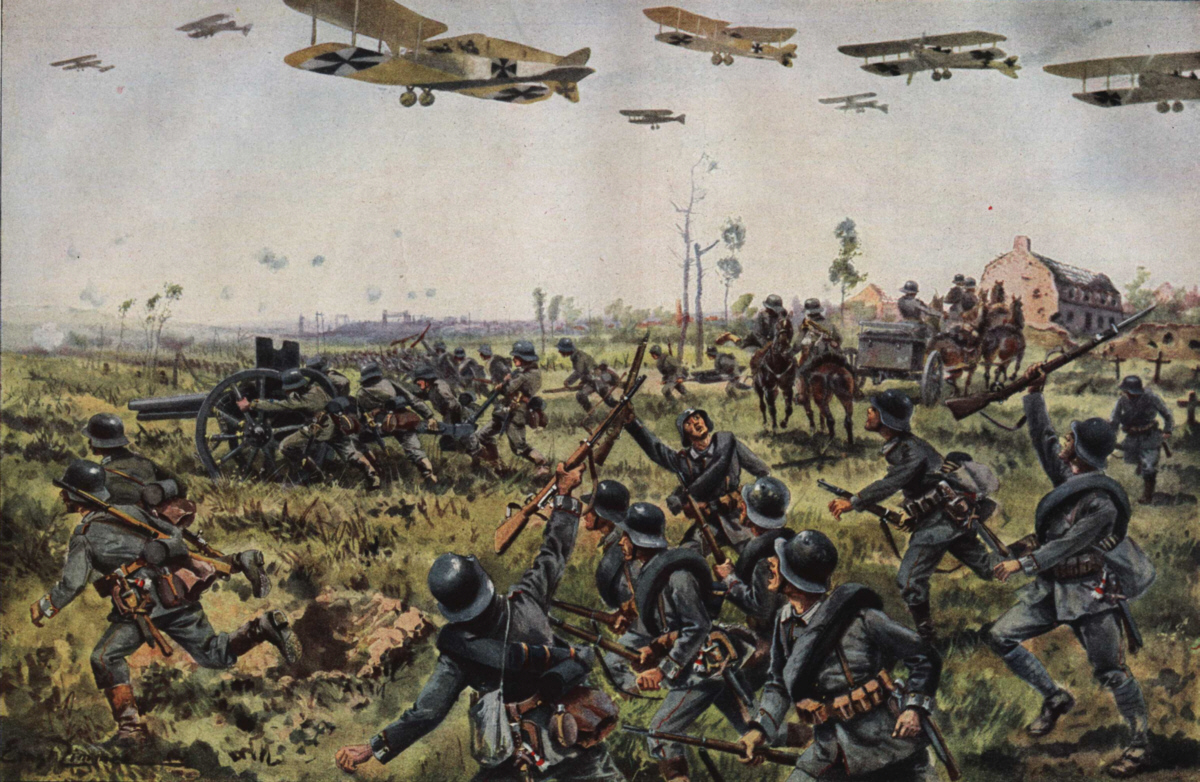Click on Image to Expand
A 1917 magazine illustration for home front consumption portrays a German Army with irresistible battlefield power.
Regardless of the fighting merits of the German military, historian Paul Kennedy sheds light on the bigger story:
Germany actually mobilized more men than Russia; but they had some problems which were not evident until the draining battles of 1916, Verdun and the Somme. These led to the Hindenburg program of 1916 expanding munitions and adding controls to the German economy. This led to greater financing measures, which also led to inflation. Also, bottlenecks in industry [occurred], which had to be cured by increased infrastructure. This called for more skilled workmen, who had to be demobilized from the army. The Hindenburg Program catastrophically neglected agriculture, which brought the country to near starvation in 1918. The underlying manpower problems affected everything.
The Rise and Fall of the Great Powers (pg. 269)
Image from Tony Langley


I love learning information as discussed in this particular topic. Made me stop and think and appreciate enhanced knowledge about WW1
ReplyDelete